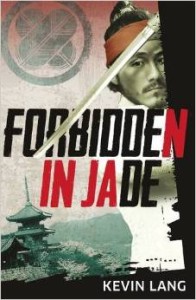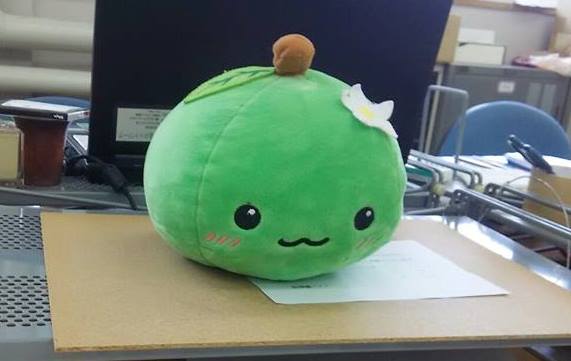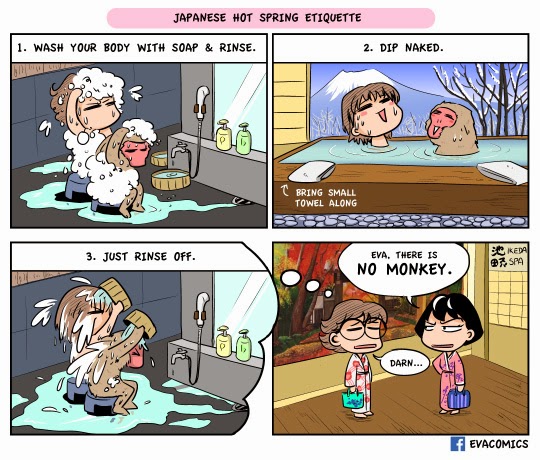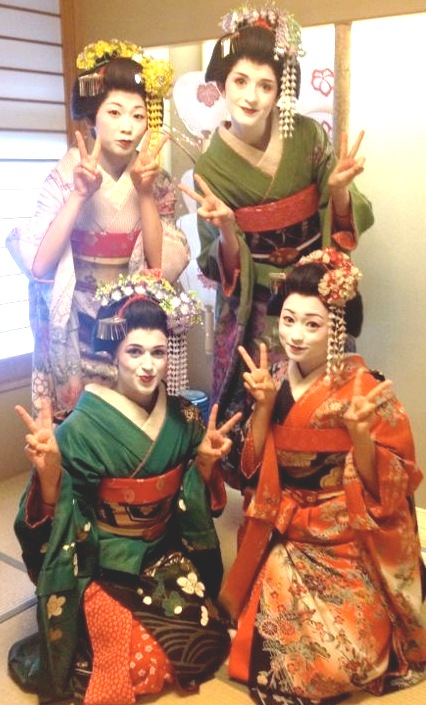Hidden History: An interview with Kevin Lang, author of Forbidden in Jade
What years were you on JET? Where did you live and teach?
It was a long time ago, from 1996-1999. I lived near Gakuentoshi. Koryodai, Hazetani Oshibedani and Sakuragaoka were the schools I worked at. The shenanigans of the ninensei at Oshibendani still make me shudder.
When did your interest in Japan, its culture and history, begin?
I studied judo when I was a child and karate at university so I wanted to come to Japan. I trained at the Kobe YMCA karate club. (Oh yes, I can hear some of you now: Young man, there’s no need to feel down.)
Can you give a quick synopsis of the book?
Forbidden in Jade is a novel about the samurai and the ninja in seventeenth-century. It describes many historical sites in Kyoto, Kobe and Nara with accounts of historical battles, warlords and notable characters.
Kotaro is the main character and it is his story: his birth and almost immediate abandonment by his father (Himeji); the samurai school (Kobe); young adulthood (Kyoto & Nara). The book also delves into the mind of a sociopath.
Where did the idea come from? How long did it take you to write?
Bizarrely, in England, we Brits have a certain unhealthy interest in our dark past. If you go to London there are tours about Jack the Ripper, execution sites and, of course, the London Dungeons. However, Japan seems to be ashamed about their darker past. There is so much interesting, grim history around Kyoto which many tourists, and for that matter the Japanese, don’t know about. I thought about the Da Vinci Code and how the novel mixed historical sites into the story. I decided to write a novel in a similar manner and inform readers about history which some Japanese would prefer we didn’t know about.
In 1997 a JHS student from Tomagaoka School (Suma-ku) cut off the head of a fellow student with a hand saw. He put the decapitated head on the school’s gate. Eventually, the boy was caught: alias Sakakibara. In custody, he admitted to killing another girl and attacking other children with a hammer and knife. This event gave me the idea to write about Shun: the sinister character in the novel. I rationalized that sociopaths are not a modern phenomenon. They have always existed. In 1966, a classic samurai movie was made: The Sword of Doom. It is about a sociopathic samurai without compassion or scruples.
It took about 3 years to write the novel.
Â
What do you think this portion of Japanese history has to offer today’s readers?
The past is connected to the present. The novel goes in depth about Shintoism and the connection between the emperor and the Sun Goddess. I wrote about the burakumin (outcastes) who are still ostracized today and the yakuza. The origins and rituals of the yakuza come from the 17th century.
Â
What specific sites in Japan would you recommend to a reader who wanted to create a deeper connection with the events in the story?
I wrote the book so people can visit Kyoto and visit many sites to learn some hidden history. For example, the old brothel area of Kyoto (Shimabara), Enryaku Temple (where 10,000 monks were slaughtered), Fushimi Inari Shrine (which was founded by the Korean Hata clan), Nijo Castle (originally guarded by the ninja), Yogen Temple (blood ceilings: a dozen samurai slit open their stomachs in Fushimi Castle and the bloody floorboards were taken to a few temples around Kyoto and used to make ceilings) and Yamazaki (not only can you visit the Suntory Whisky Museum but it is the site of a decisive battle which acted as a stepping-stone for Toyotomi to gain control of Japan).
Are you working on anything else at the moment?
I have written a few chapters for my next book. It is set in Osaka and Edo and is about samurai, ninja and hidden treasure of the shogun.
What advice would you give to a JET who also hopes to write in the future?
Get off the internet and start writing. I had no desire to write a novel but four years ago my old LAPD friend unexpectedly contacted me. He asked me to check his novel that he had written. I rewrote parts of the book. He liked what I had done and said I should write a novel myself. So I did. If I can write a book so can you.
Â
Anything else you’d like to add?
You can read the first seven chapters on Amazon Kindle. I must admit, the first couple of chapters are a little brutal. Also Lucy Ridout was the editor. She was a JET: pre-earthquake Kobe. She has edited many bestselling books and she wrote The Rough Guide to Thailand.
 Kevin kindly let us excerpt the first chapter of Forbidden in Jade below:
Kevin kindly let us excerpt the first chapter of Forbidden in Jade below:
Chapter 1
Fushimi Castle, near Kyoto
Some say that the darkest and coldest part of the night is just before dawn. It is also the time when great armies are susceptible to attack. Sleep is usually at its deepest, sentries are fatigued and raiders can escape in the morning light.
Concealed by the forest one hundred paces from Fushimi Castle, a group of men were intently watching the movements of a handful of fully armoured samurai who were patrolling the battlements.
‘It’s time,’ the leader whispered to a young man.
‘Hai,’ Hayato softly replied.
Reaching for his pocket, Hayato pulled out a strange-looking object. He pressed the dog’s paw to his lips and kissed it before putting it swiftly back. He had every faith that his talisman would keep him and his clan invisible to the enemy.
Hayato slowly got to his feet from his squatting position. He, like the others, was dressed head to foot in dark blue. Scarves covered their faces, making it hard to distinguish one from the other. All were short and slender, with overdeveloped forearms and wrists. Adhering to a strict diet kept their weight to a minimum. Their bodies were built to climb walls and cling to rooftops.
‘Go!’ the leader said.
Crossing through the undergrowth, the others followed Hayato. With grappling hooks and ropes, the group of men expertly scaled the castle battlements undetected. Staying in the shadows, the intruders carefully crept along wall tops, up and down stone stairways, hoping to catch the sentries napping. The stifling humidity, even in the early hours, was draining. The samurai on guard, smelling of sweat, found it difficult to stay vigilant.
In the moonlight, the intruders caught sight of a lone man standing at his post and staring out into the darkness.
The leader made a hand signal.
While the rest stayed motionless, Hayato slowly pulled out a knife and stayed close to the wall. He moved in for the kill. The samurai was taken from behind. Hayato wrapped one of his hands around his victim’s mouth and pulled his chin up and back while his other hand drew the blade slowly across the man’s throat, slashing it from ear to ear.
Stepping over the twitching body, eight dark shapes moved silently towards the five-storey keep.
When they reached the tower, the leader stopped and sniffed. He smelt blood. Hayato was covered in it. The young man was too much of a liability to go any further. ‘Search the battlements for other samurai,’ the leader said calmly.
‘Hai.’ Hayato bowed and watched his clansmen climb up to a small window. It was skilfully prised open and, one by one, they slithered through. Hayato pivoted away and scanned the battlements, then went in search of sentries.
Inside the keep, the team of ninja climbed the narrow flight of stairs. A few sleepy samurai guards were taken by surprise and garrotted. The plan went smoothly until they reached the corridor outside the bedchamber. Although dry floorboards naturally groan under pressure, these floors were designed to sound a warning.
‘Uguisubari.’ Nightingale floors. The leader cursed.
The sound of a faint creak snapped the warlord from his sleep. The fifty-seven-year-old man sat up nervously on his mattress. Instinctively, he reached for his scabbard, unsheathed his sword and slowly got to his feet. The man was overly suspicious, and he had good reason to be. These were dangerous times. In feudal Japan, fragile truces were habitually broken, turning allies into potent enemies. No one could be trusted. Paranoid, the warlord was convinced that everybody was busily scheming behind his back.
Hideyoshi Toyotomi was ruthless and cunning. He was a man who was blessed with neither good looks nor tall stature. His great army had slaughtered thousands upon thousands of rival samurai during his campaign to seize control of Japan. Once in power, he tightened his grip, imposing a rigid class structure, restricting travel and taking weapons away from peasants and merchants. His despotic plans didn’t end there. He had set his sights on conquering both China and Korea as well. He had untold enemies.
Toyotomi crossed the large, tatami-mat room and placed his ear against the doorframe. Listening intently, he heard footsteps somewhere outside. Then silence. His heart began to race.
Spinning around, he strode nimbly across the room to a square window and pulled open the wooden shutters. Looking into courtyard, he saw that the sentry posts were all unmanned.
He moved across to the wall. Groping in the darkness, his fumbling fingers struggled to find the hidden lever. After a few nervous seconds, a door finally swivelled open. He escaped into a hidden chamber.
A moment later, noiselessly, the paper screen door to the bedchamber was slid open. After carefully peering into the dimly lit room, one of the ninja took a cautious step forward. His movements were precise but relaxed. He trod silently, scanned constantly and then gave a hand signal. Half a dozen sure-footed masked ninja followed. The last man in closed the door quietly.
They wore no armour. Samurai carried their swords on their hips, but the ninja had theirs strapped to their backs.
The vast room appeared to be empty, yet a distinctive sour, musky odour hung in the night air. The men moved silently to the wooden pillow and thick quilted mat. One of the assassins quietly sank down onto his haunches and sniffed the silk blanket while his free hand pressed down on the mat, feeling the warmth.
‘He’s here,’ the leader whispered. ‘Search the corridors and other rooms.’
The group of men immediately obeyed and disappeared into the darkness.
Alone, a small, muscular man scanned the large, opulently furnished room. A lamp in the corner illuminated the rare and extravagant artefacts that decorated every corner. It was a beautiful room. No, it was more than that. It was exquisite. Three walls were ostentatiously covered with gold leaf and the fourth bore an intricate wall carving. The place had an aura of power.
Getting quietly to his feet, the ninja padded over to the wood-carved relief of pine trees, mythical dragons and hawks. He began to sniff, catching a faint whiff of body odour. The warlord was close. He sensed it.
Lightly, the ninja swept his fingers over the yew panel: once, twice and finally a third time. His hand stopped, hovering over a dragon’s wooden claw. Something wasn’t quite right.
Pressing, pulling and twisting, the ninja worked the lever until a door finally glided open. As he stared into the dark passageway, he didn’t see, or expect, the slab of dark oak embedded with steel rivets that came swinging at his head.
Blood streamed from his nose. Semi-conscious, the assassin, now flat on his back, saw the face of Hideyoshi Toyotomi staring down at him, holding the club above his head, ready to strike a second time.
Very few knew the assassin’s face, yet most knew his name. It was Kirigakure Saizo – Hidden Mist – and his attempt to assassinate the most powerful man in all of Japan had just failed, dismally.
Hidden Mist unobtrusively reached into his jacket and pulled out a small bottle of poison. He pressed it to his lips, about to swallow, but before he could the oak club smashed him across the head. The bottle was dropped. He fell into unconsciousness.
Those who committed serious crimes in Toyotomi’s fiefdom – crimes such as murder or arson – faced severe punishments. They were boiled alive, burnt at the stake, crucified, decapitated or sawn in half with serrated bamboo.
The fate awaiting Hidden Mist would be even worse.
Kevin Lang






